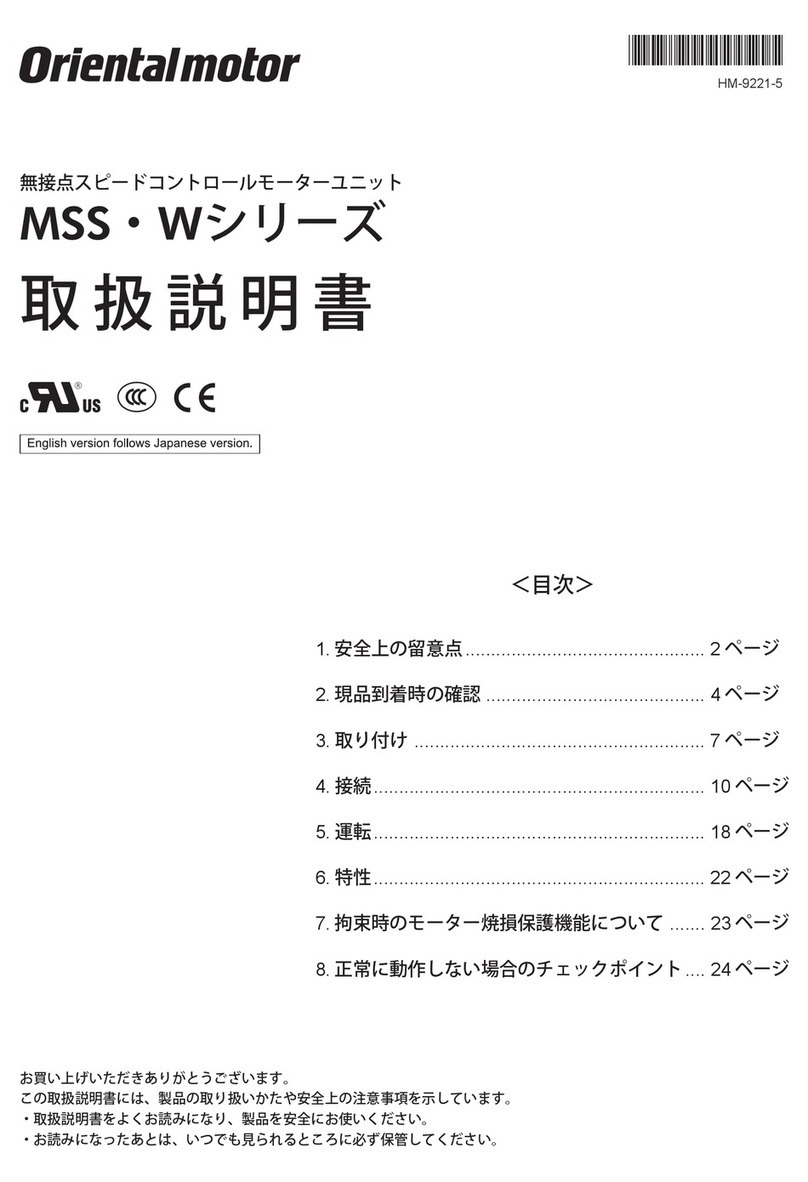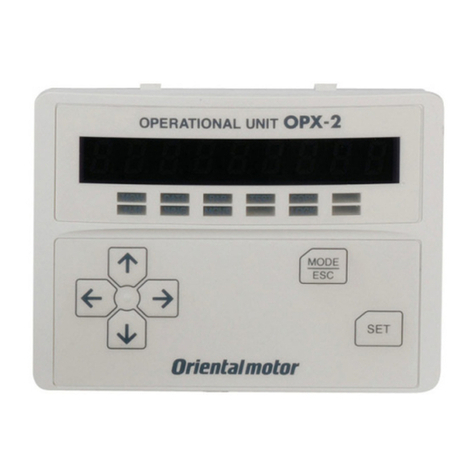
Precautions for use
9
5 Precautions for use
This section covers limitations and requirements the user should consider when using the product.
zAlways use the cable (included or accessory) to connect the motor and driver.
Be sure to use the cable (included or accessory) to connect the motor and driver.
If a cable other than the included cable or accessory cable is used, the driver may generate a large amount of heat.
In the following condition, an appropriate accessory cable must be purchased separately. Refer to p.56 for details.
•If a exible cable is to be used.
•If a cable of 3 m (9.8 ft.) or longer is to be used.
•If a motor and driver package without a cable was purchased.
zWhen conducting the insulation resistance measurement and the dielectric strength test, be sure to
separate the connection between the motor and the driver.
Conducting the insulation resistance measurement or dielectric strength test with the motor and driver connected
may result in damage to the equipment.
zDo not apply a radial load and axial load in excess of the specied permissible limit
Operating the motor under an excessive radial load or axial load may damage the motor bearings (ball bearings). Be
sure to operate the motor within the specied permissible limit of radial load and axial load. Refer to p.24 for details.
zMotor case temperature
•The driver has an overheat protection function, but the motor has no such feature. The motor surface temperature
may exceed 100 °C (212 °F) under certain conditions (operating ambient temperature, operating speed, duty cycle,
etc.). To prevent the motor bearings (ball bearings) from reaching its usable life quickly, use the motor in conditions
where the surface temperature does not exceed 100 °C (212 °F).
•Use the geared motor in a condition where the gear case temperature does not exceed 70 °C (158 °F), in order to
prevent deterioration of grease and parts in the gear case.
zHolding torque at standstill
The motor holding torque is reduced by the current cutback function of the driver at motor standstill. When selecting
a motor, check the holding torque at motor standstill in the specications on the catalog.
zDo not use the electromagnetic brake to reduce speed or as a safety brake.
Do not use the electromagnetic brake as a means to decelerate and stop the motor. The brake hub of the
electromagnetic brake will wear signicantly and the braking force will drop if used to stop the motor.
The electromagnetic brake is a power-o activated type. This means that although it helps maintain the position of
the load in the event of power outage, etc., this brake cannot securely hold the load in place. Accordingly, do not use
the electromagnetic brake as a safety brake. To use the electromagnetic brake to hold the load in place, do so after
the motor has stopped.
zPreventing leakage current
Stray capacitance exists between the driver’s current-carrying line and other current-carrying lines, the earth and the
motor, respectively. A high-frequency current may leak out through such capacitance, having a detrimental eect on
the surrounding equipment. The actual leakage current depends on the driver’s switching frequency, the length of
wiring between the driver and motor, and so on.
When connecting an earth leakage breaker, use one of the following products oering resistance against high
frequency current:
Mitsubishi Electric Corporation: NV series
zPreventing electrical noise
See "10-6 Noise measures" on p.36 for measures with regard to noise.
zGrease of geared motor
On rare occasions, a small amount of grease may ooze out from the geared motor. If there is concern over possible
environmental damage resulting from the leakage of grease, check for grease stains during regular inspections.
Alternatively, install an oil pan or other device to prevent leakage from causing further damage. Oil leakage may lead
to problems in the customer’s equipment or products.




































